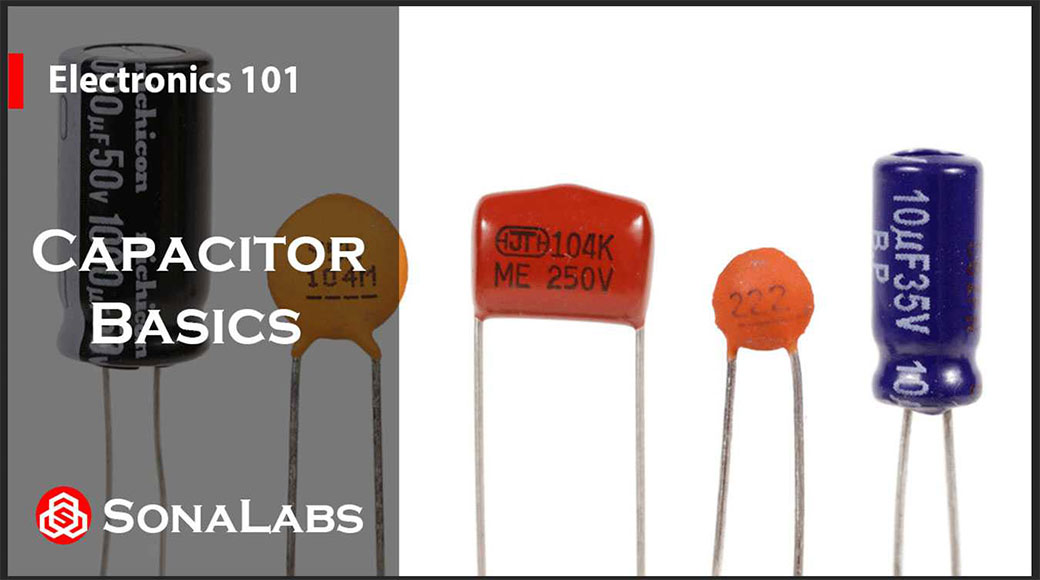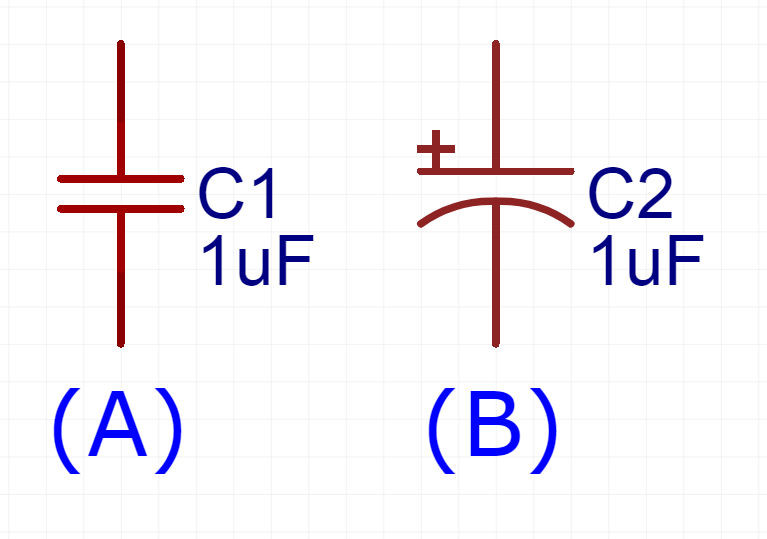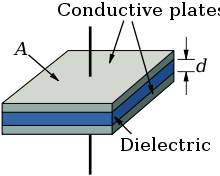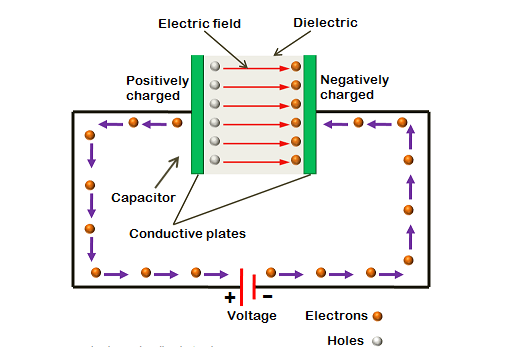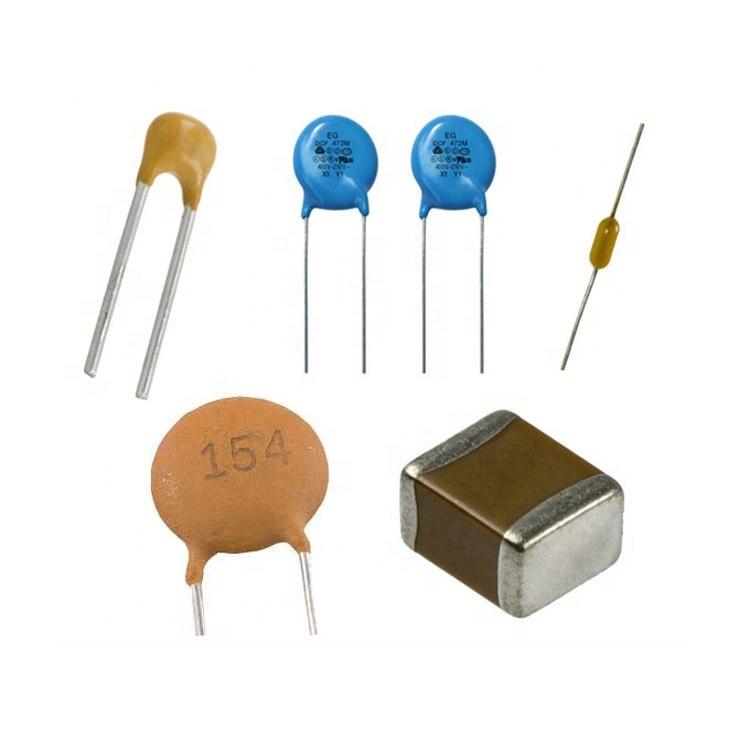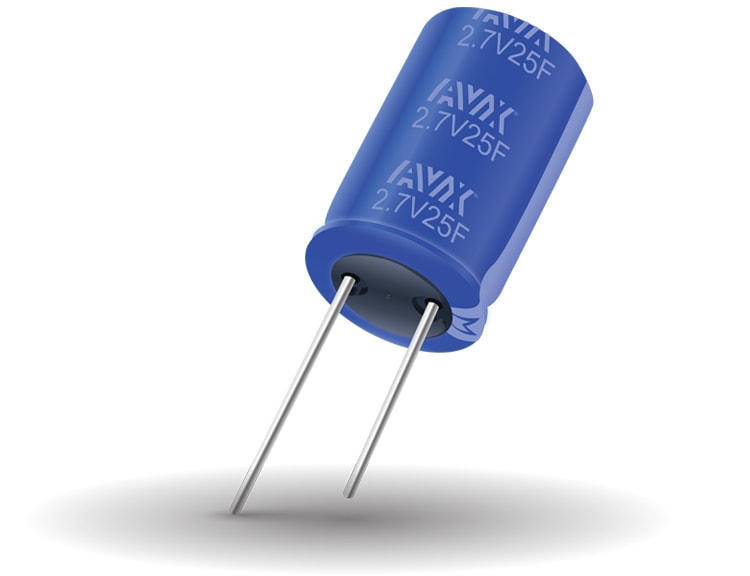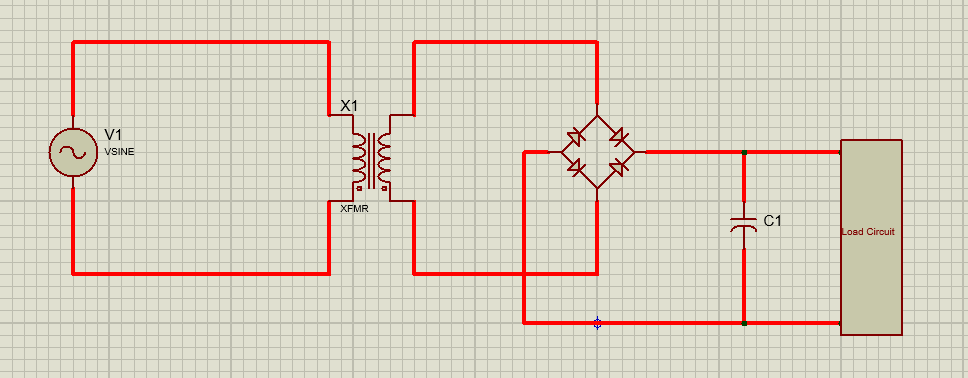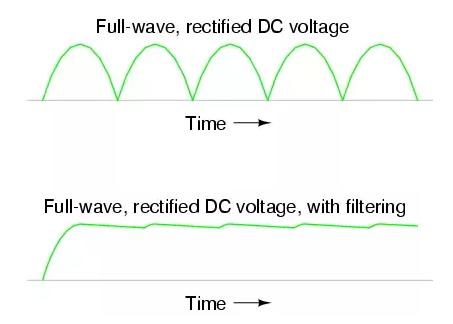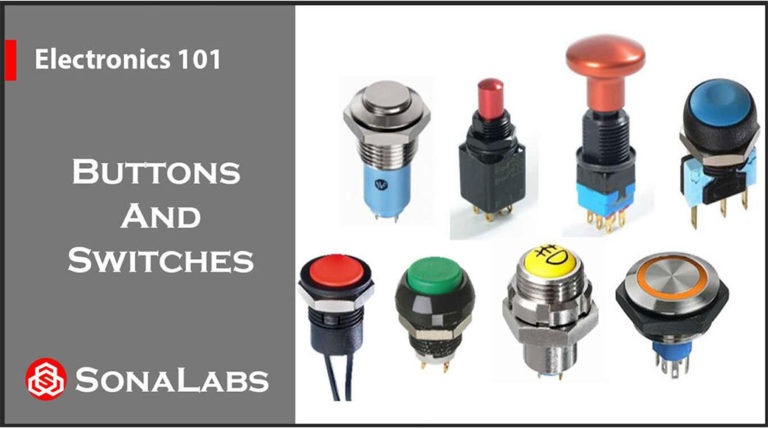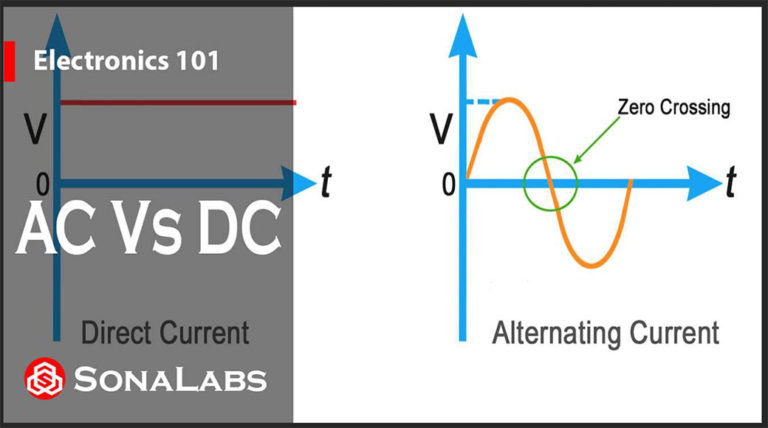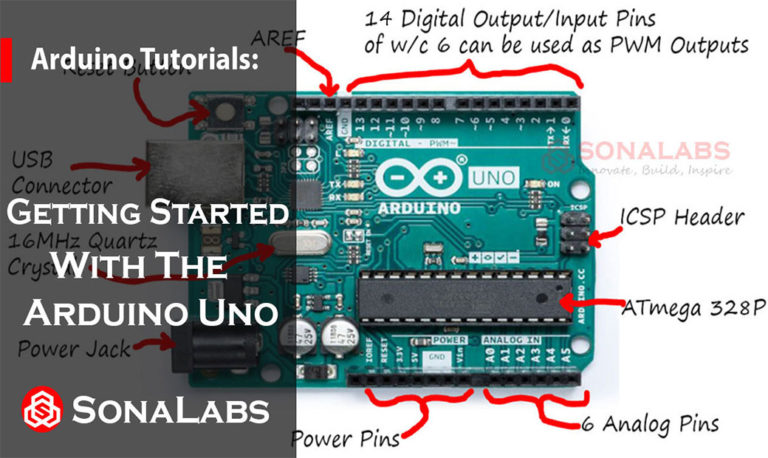Lesson-06 Capacitor Basics
A Capacitor is a two-terminal electrical component and just like a resistor, its one of the fundamental passive components we often use when building electrical/electronic circuits. It is very hard to find a circuit without a capacitor on it. Capacitors are special components because of their capability to store energy just like a fully charged dc battery.
In this tutorial we’re going to cover different topics related to capacitors and these include: How a capacitor is made, how it works, units of capacitance, types of capacitors, how they combine in series & parallel, and their common applications.
Have a look at the previous tutorials;
Lesson – 01: Electricity Basics
Circuit Symbols & Units:
On a schematic diagram, a capacitor has two terminals which connect to the rest of the circuit and the symbol consist of two parallel lines (plates) which can be drawn in two ways i.e. flat or curved. These lines (plates) are close but they don’t touch each other as illustrated below in figure A and B;
In the figure above, (A) and (B) are the standard capacitor circuit symbols. The symbol (B) indicates that a capacitor is polarized meaning that its probably an electrolytic capacitor. We’ll cover more on this later in the types of capacitors. Each capacitor is accompanied by a name eg. C1 & C2 and a value that indicates the capacitance of the capacitor eg 1µF as shown above.
Units of Capacitance;
The capacitance of a capacitor tells you how much charge it can store, more capacitance means more capacity to store charge. The standard unit of capacitance is called a Farad which is often abbreviated as F.
Consider the table below that shows the different capacitance ranges. Usually you’ll see capacitors rated in the Pico (10-12) to microfarad (10-6) range. Capacitors that fall under the range of kilofarad, are special caps called super of ultra-capacitors.

How a capacitor is made:
A capacitor is made out of two conductors (metal plates) separated by a non-conductive region which can either be a vacuum or an electrical insulator material known as a “dielectric” which can be made out of glass, air, plastic, paper, ceramic or anything that will hinder the flow of current. The two conductors (metal plates) are placed very close to each other in parallel with the dielectric in between then to make sure they don’t touch at any one moment. The metal plates are made of a conductive material usually aluminium, silver or other metals and they are connected to a terminal wire which then connects to the rest of the circuit.
Consider the figure below;
Calculating the capacitance:
The total capacitance (number of farads a cap has) of a capacitor can be calculated with the equation below;
C = εr (A/4πd) …………. (i)
Where,
ε – is the dielectric’s relative permittivity (a constant value determined by the dielectric material).
A – is the amount of area the plates overlap each other and
d – is the distance between the plates.
Note: The capacitance of a capacitor depends on how its constructed. More capacitance requires a larger capacitor and the plates with more overlapping surface area provide more capacitance while more distance between the plates means less capacitance. The material of their dielectric also has an effect on how many farads a capacitor has.
How a capacitor works:
Consider the image below;
When current flows through a capacitor, the charges get “stuck” on the plates because they can’t get passed the insulating dielectric material. As a result electrons (the negatively charged particles) are sucked into one of the plates and it becomes overall negatively charged. The accumulated negative charges on one plate pushes away like charges on the other plate making it positively charged.
The negative and positive charges on each of these plates attract each other, this is obvious as we all know unlike charges attract. But with the dielectric in place, as much as they want to come together, the charges will always be stuck on the plates (until they have somewhere else to go). The charges that are stuck on the plates later create an electric field which influence the electrical potential energy and voltage. When charges pile on a capacitor like this, the capacitor is storing electric energy just as a battery might store chemical energy.
Charging & Discharging a Capacitor:
When the negative and positive charges conflate on the capacitor metal plates, the capacitor becomes charged and because the charges on each of the plates attract each other, the capacitor is capable of retaining its electric field i.e hold its charge.
How do you tell the capacitance of a given capacitor? You ask…!!! At some point the capacitor plates will be so full of charges that they cannot be accepted anymore, that is, when there’s enough enough negative charges on one plate that they can repel any other that is trying to join. This is the point where, Capacitance (in Farads) comes into play which tells the maximum amount of charge a given capacitor can store.
When a path in the circuit is created, this allows the charges to find another path to each other and by doing so, they are leaving the capacitor and it will discharge. For example lets consider the simple circuit below consisting of a capacitor, battery (power source), a resistor and an LED;
In the circuit above, the battery (power source) is used to induce an electrical potential across the capacitor and this will cause equal but opposite charges to build up on each of the plates of the capacitor until they are so full to the point of repelling any more current from flowing. When we place an LED in series with the capacitor, this will provide a path for the current and the energy stored in the capacitor can be used to briefly illuminate the LED.
How to calculate Charge, Current & Voltage:
How much charge a capacitor is currently storing depends on the potential difference (voltage) between its plates. The relationship between charge, voltage and capacitance can be combined in this equation.
Q = C x V ……………. (ii)
Where;
Q = stored charge in a capacitor
C = Capacitance of the capacitor
V = Voltage (potential difference) applied to the cap.
This literally means that, Charge (Q) stored in a capacitor is the product of its capacitance (C) and the Voltage (V) applied to it.
In the above equation (Eqn. ii), one would ask, where is the current at? So to answer this question, we take the Equation (ii) a step further to find out how capacitance and voltage affect current since it’s the flow of charge. Now one thing you should know is that the amount of current through a capacitor depends on both the capacitance and how quickly the voltage is rising or falling.
If the voltage across the capacitor rises very fast, a large positive current will be induced through the capacitor and if there is a slower rise in voltage across the capacitor, then this leads to a smaller current through it. If the voltage across a capacitor is somewhat steady and unchanging/constant, then no current will go through it.
The Equation for calculating current through a capacitor is;
i = C.(dv/dt) …………………. (iii)
Well, don’t freak out. For a beginner, the equation above is somewhat scary but lets try to break it down for you. The dv/dt part of the equation is a derivative (instantaneous change of one quantity relative to another) of voltage over time. It’s more like saying, how fast is the voltage going up or down at this very moment.
One thing we should take note of from the above equation is that if the voltage is steady, the derivative is zero which means current is zero. So this is why current cannot flow through a capacitor holding a steady, DC voltage.
Types of Capacitors:
Today there are lots and lots of capacitor types out there, each with certain features and drawbacks which makes it ideal for some applications than others. There are a handful of factors to consider when selecting a given capacitor type which include size, maximum voltage, leakage current, equivalent series resistance (ESR) and tolerance. The different types we’re going to talk about include;
-
Ceramic Capacitors:
The name “ceramic” comes from the material from which their dielectric is made. These are the most commonly used and produced capacitors on the market. They are usually small in size and also their capacitance is small often times under 10µF. These come in two types i.e Surface-mount ceramic caps commonly found in a 0402, 0603 package and Through-hole ceramic caps that usually look like small bulbs with two protruding terminals as shown in the figure below;
Pros:
More near-ideal capacitor (much lower ESR & leakage currents).
Least expensive as compared to others.
Well suited for high-frequency coupling and decoupling applications.
Cons;
Their small capacitance can be limiting.
-
Electrolytic Capacitors;
Electrolytic capacitors pack a lot of capacitance (1µF – 1mF) into a relatively small volume which makes them well suited to high-voltage applications because of their relatively high maximum voltage ratings. These are often made in two materials, aluminum and tantalum where the latter (aluminum electrolytic capacitors) are the most popular of the electrolytic family and these usually look like little tin cans with two leads protruding from the bottom as shown in the figure below.
Unlike ceramic capacitors, electrolytic capacitors are usually polarized. The two protruding terminals at the bottom, the slightly longer terminal is the positive pin called the anode marked with “+” and the other shorter terminal is the negative pin called the cathode marked with “-” and a colored strip on the case.
When a voltage is applied to this capacitor, the anode must be at a higher voltage than the cathode and if voltage is applied in reverse order, the cap will fail spectacularly making it pop and burst open which makes the electrolytic behave like short circuit.
Cons:
These capacitors have a leakage problem which allows small amounts of current to escape through the dielectric from one terminal to another. This makes them less than ideal for energy storage which is unfortunate given their high capacity and voltage rating.
-
Supercapacitors;
Supercapacitors are uniquely designed to have very high capacitances in the range of Farads. Supercapacitors are the most ideal capacitors for energy storage and just like electrolytic capacitors, these are also polarized as shown below;
Unfortunately while supercapacitors can store a huge amount of charge, they can’t deal with very high voltages. Forename a 10F super-cap can only be rated 2.5V Max and more than that will destroy it. To solve this, they are most often placed in series to achieve a higher voltage rating while reducing total capacitance.
Super-caps are mainly used in storing and releasing energy just like batteries which happen to be their main competition and while they can’t hold as much energy as an equally sized battery, they can release it much faster and they usually have a much longer life span.
-
Others;
The other types of capacitors include the film capacitor which features very low ESR losses making them great for dealing with very high currents and the other type is variable capacitors which can produce a range of capacitances which makes them a good alternative to variable resistors in tuning circuits.
Capacitors in Parallel;
Unlike resistors, when capacitors are placed in parallel with one another, the total capacitance is simply the sum of all capacitances. This is similar to the way resistors add up when placed in series. For example if you add three capacitors of values 0.5µF, 1µF and 10µF in parallel, the total capacitance would be (0.5 + 1 + 10 = 11.5µF). Consider the figure below;
C(total) = C1 + C2 + ….. +CN-1 + CN …………. (v)
Capacitors in Series;
Adding capacitors in series is much easier as compared to when in parallel. The total capacitance of N capacitors in series is the inverse of the sum of all inverse capacitances. Consider the image below;
1/C(total) = 1/C1 + 1/C2 + …. + 1/Cn-1 + Cn ………….. (vi)
If we are two consider just two capacitors in series, we can use the “product-over-sum” method to calculate the total capacitance as shown below;
C(total) = (C1C2)/(C1 + C2) ………….. (vii)
If we also happen to have equal-valued capacitors in series, the total capacitance is half of their value. For example; two 10F super-caps in series will produce a total capacitance of 5F but this will also have the benefit of doubling the voltage rating of the total capacitor from 2.5V to 5V.
Applications of Capacitors;
There are quite a number of applications of capacitors and some of the examples of their wide range of use include;
-
Energy storage and supply;
Capacitors store energy just like batteries but the only problem with them is that they have a lower energy density as compared to batteries, they just can’t pack as much energy as an equally sized chemical battery. The only advantage they have over batteries is that they have a longer lifespan which makes them a better choice environmentally. They are also capable of delivering energy much faster than a battery which makes them good for applications that need a short but high burst of power.
-
Power supply filtering;
Consider an AC-to-DC power supply circuit below;
In the above circuit, the filter capacitor C1 is critical in smoothing out the DC signal sent to the load circuit.
In a bridge rectifier circuit, shown above, diode rectifiers are used to turn the AC voltage coming out of your wall into DC voltage required by most electronics but these diodes can’t turn an AC signal into a clean DC signal so they need the help of capacitors to turn the rectified signal into a near-level DC signal as shown below;
-
Signal filtering;
Capacitors respond to signals or varying frequencies differently. They have the capability of blocking out low frequencies while allowing high frequencies go right through. Signal filtering is applied in all sorts of signal processing applications for example radio receivers use capacitors to tune out undesired frequencies.
-
Decoupling/bypass Capacitors;
Decoupling capacitors are used to suppress high-frequency noise in power supply signals by taking tiny voltage ripples which could otherwise be harmful to delicate ICs out of the voltage supply. They act as very small local power supply for ICs almost like UPS is to desktop computers and this is why they are also called bypass capacitors because of their ability to act as a temporary power source bypassing the power supply. These caps are more effective when physically placed as close as possible to an IC.
Conclusion;
We’ve talked about almost everything there is to talk about capacitors, that is how they are made, how they work, how they discharge and charge, their different types, their series and parallel configurations and their applications in real life electronics. It is important to note however that you should design your circuits with capacitors that have a much higher tolerance than other components in your system. In the next chapter we’ll talk about Series and Parallel Circuit configurations with both resistors and capacitors.


